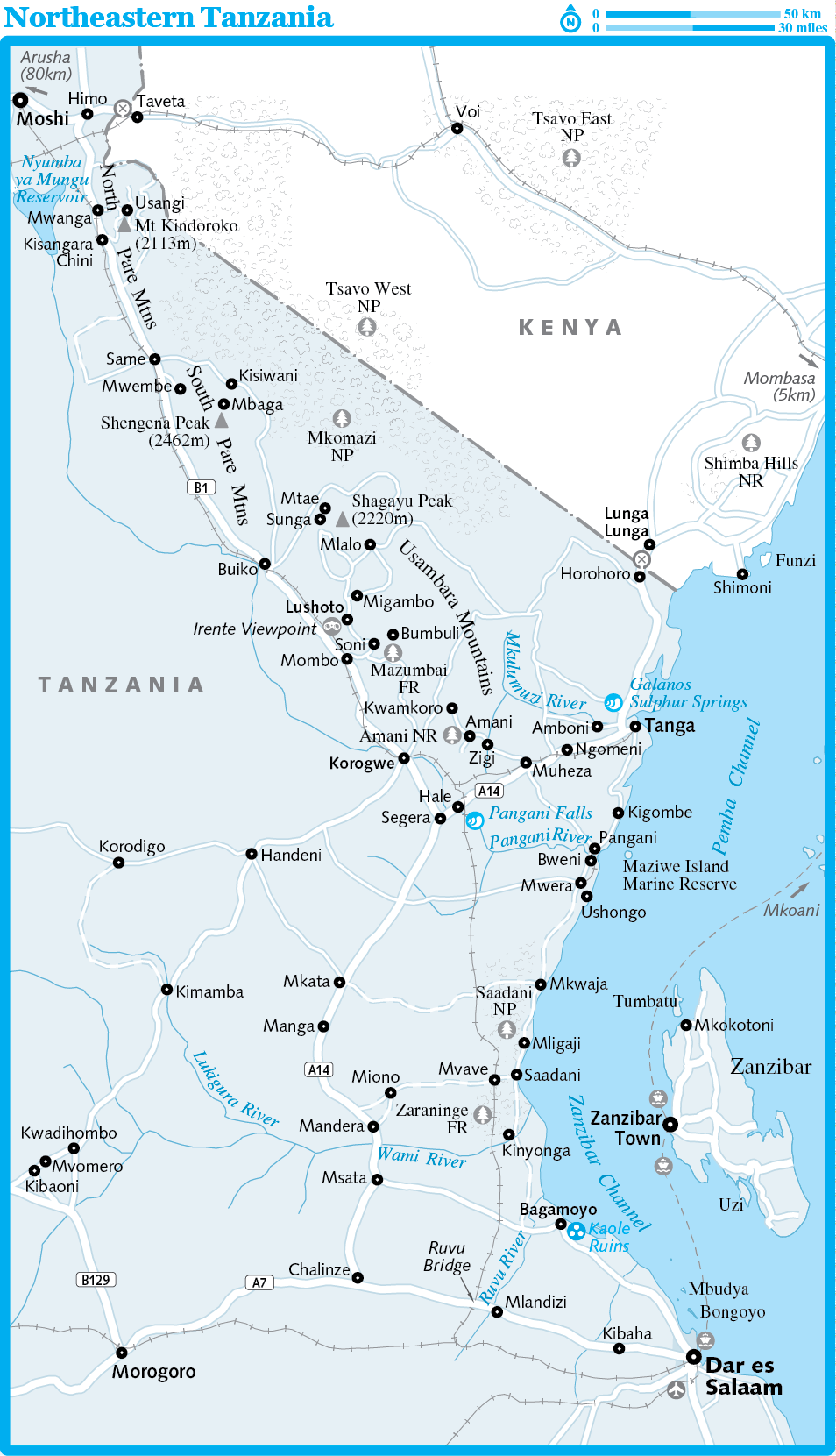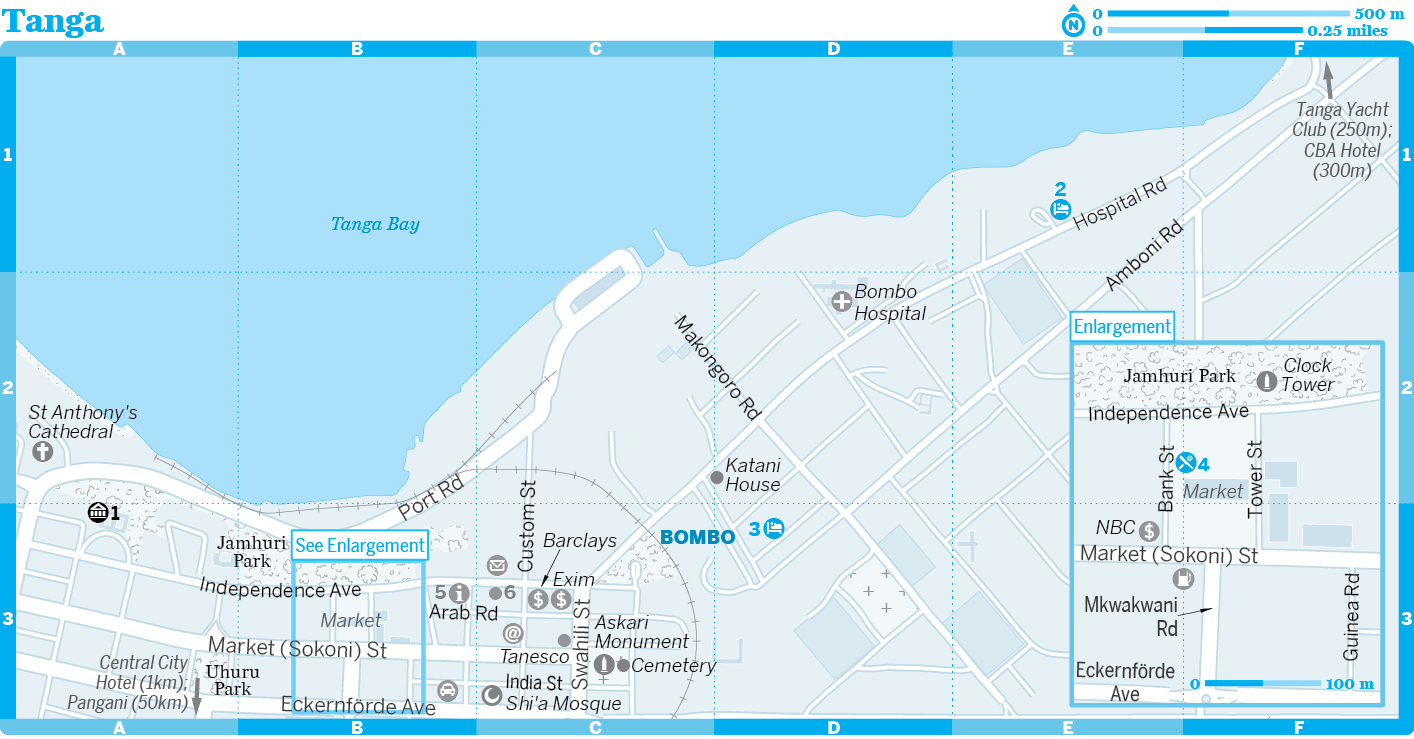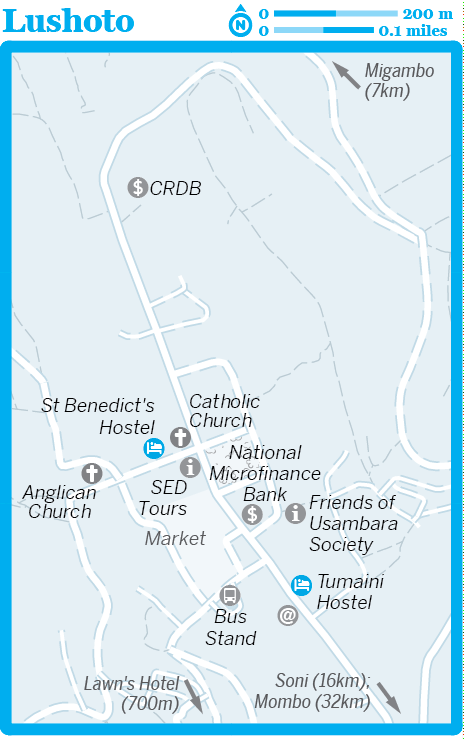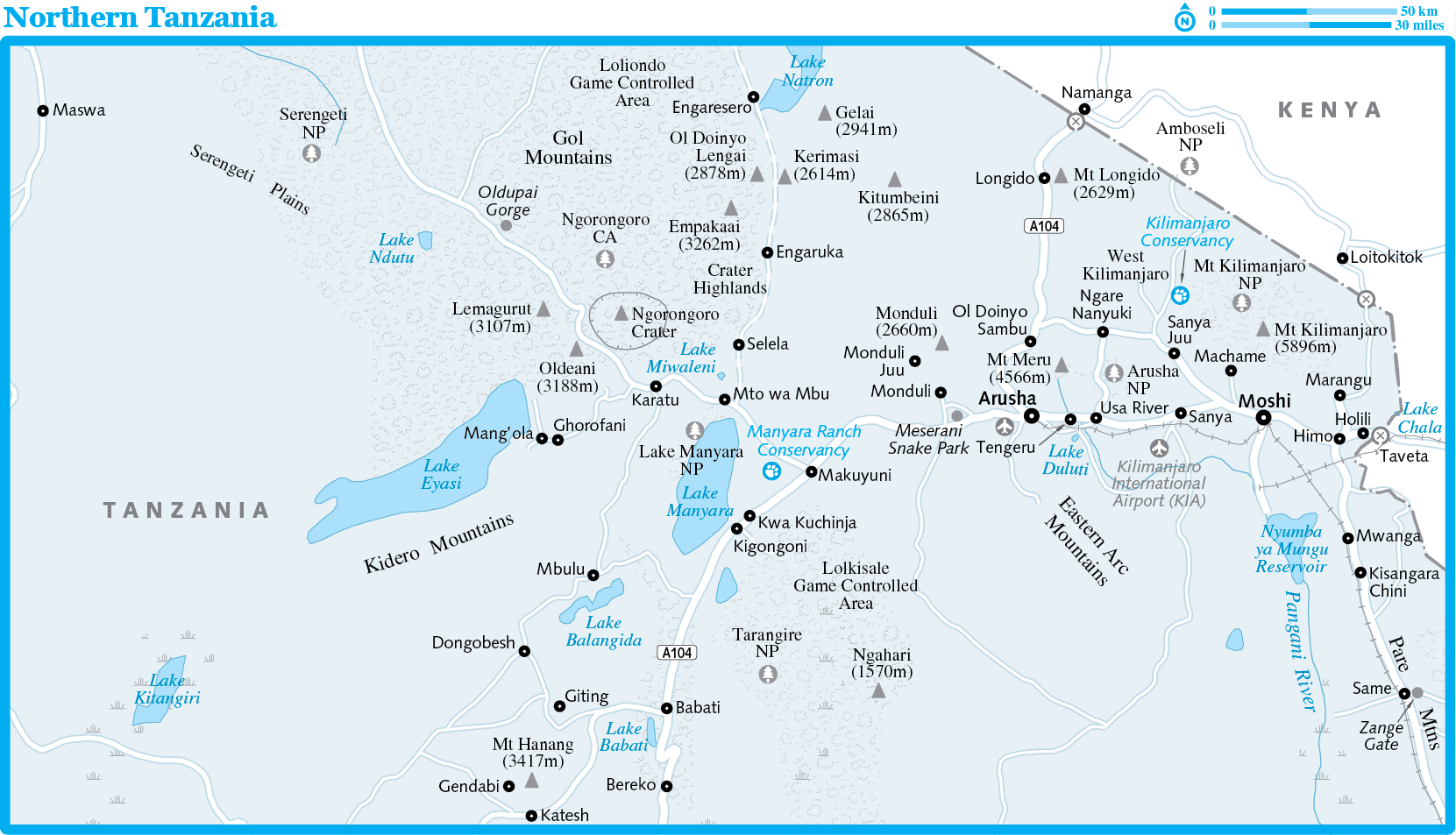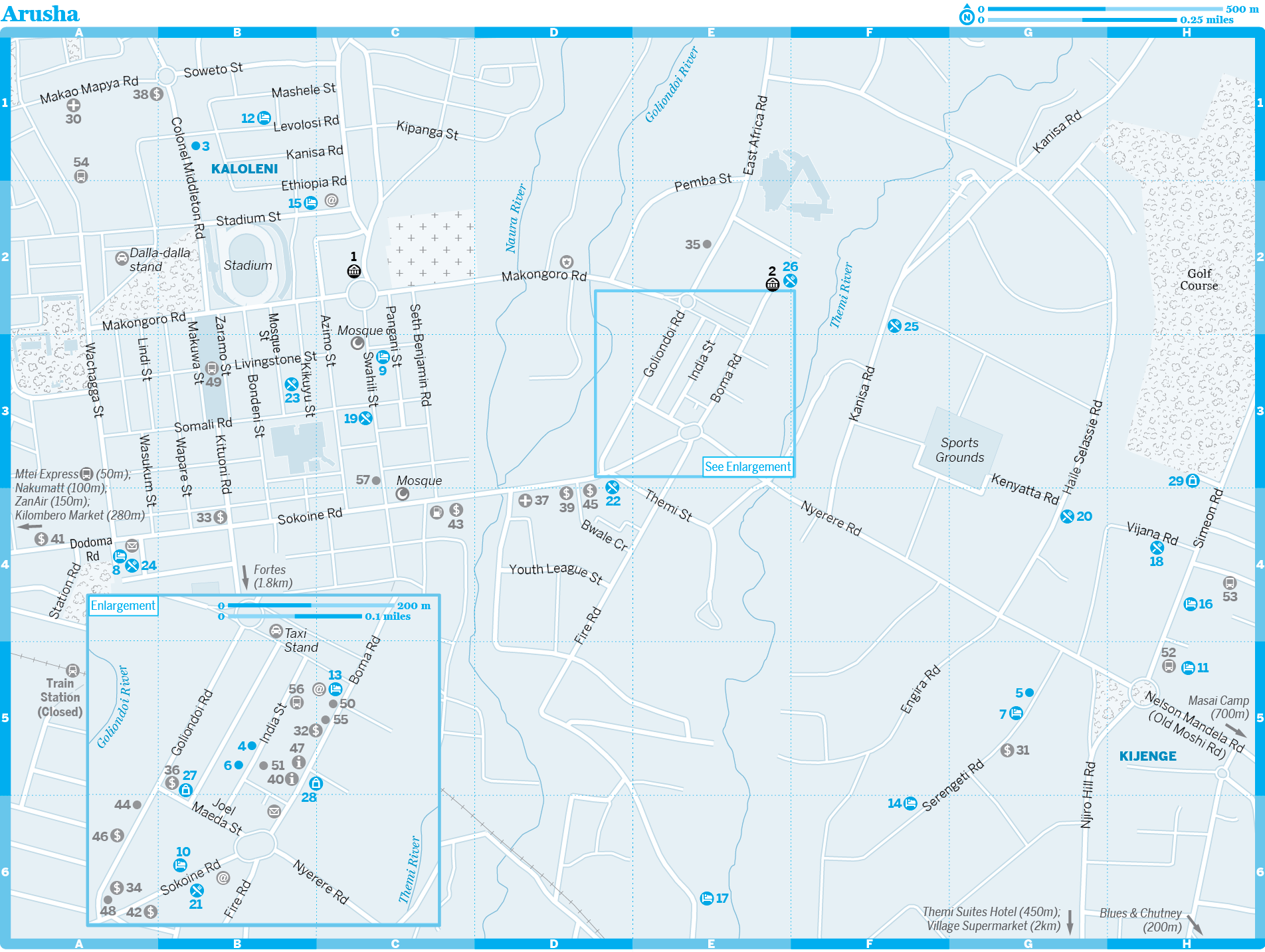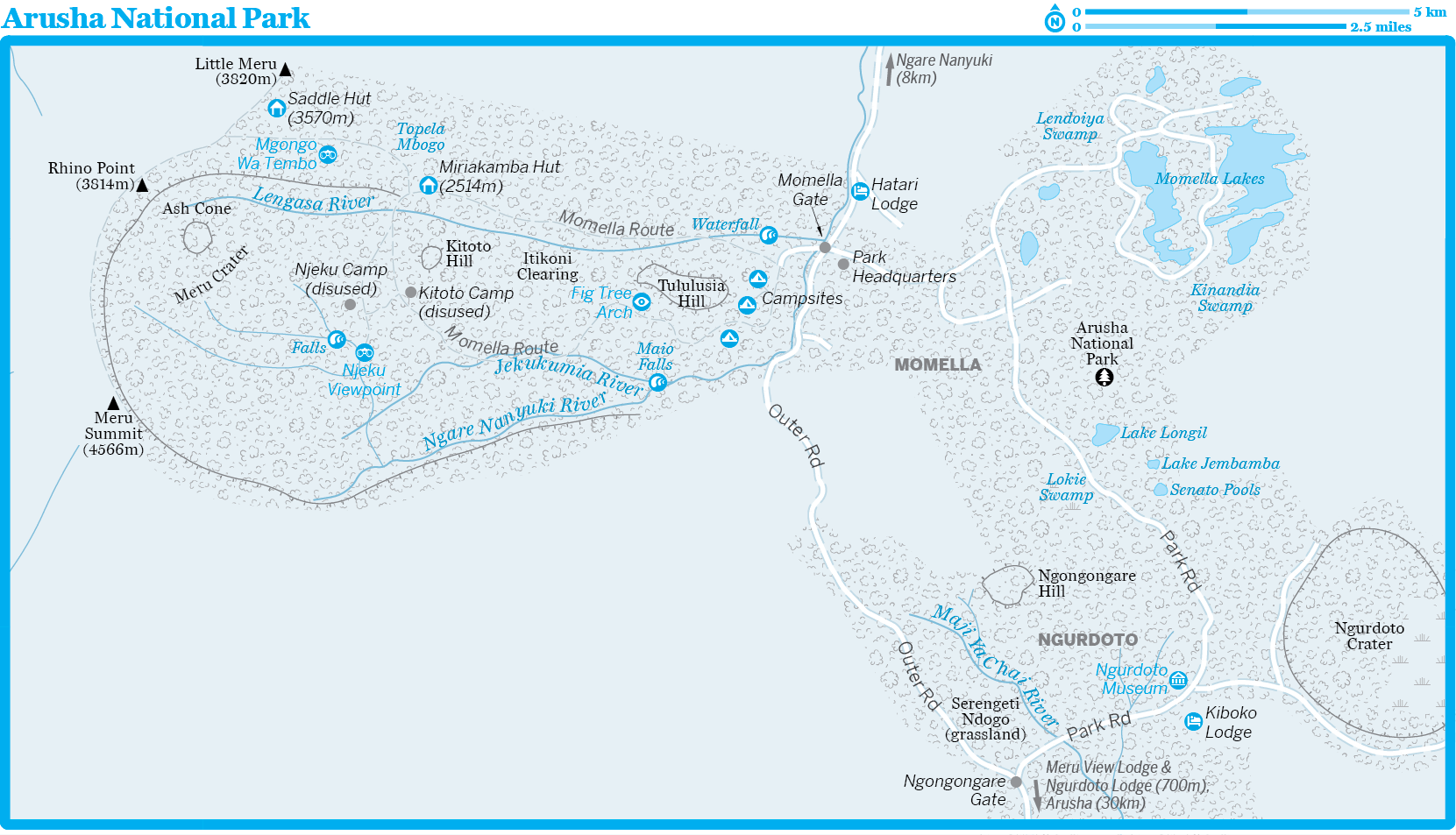Ras Mkumbuu
Ras Mkumbuu is the long, thin strip of land jutting into the sea northwest of Chake Chake. At its tip are the ruins (adult/student US$5/4) of a settlement believed to be Qanbalu, the oldest known Muslim town in Africa.
During the rainy season you’re likely to be able to drive no further than Kichanjaani (Depu), leaving about a 3.5km walk. You could also go by boat from Wesha.
Mkame Ndume (Pujini) Ruins
About 10km southeast of Chake Chake, near Pujini, are the atmospheric ruins (late 15th century to early 16th century) of what was either a fort or a palace of the infamous Mohammed bin Abdul Rahman, who ruled Pemba prior to the arrival of the Portuguese. Locally, Rahman is known as Mkame Ndume (Milker of Men) and for Pembans, his name is synonymous with cruelty due to the harsh punishments he meted out to his people.
Dalla-dallas from Chake Chake to Pujini (Tsh1000, one hour) are infrequent and the ruins are poorly signposted. A taxi from Chake Chake costs about Tsh30,000 return.
Wambaa
Pemba’s most exclusive property, Fundu Lagoon Resort (![]() %0774 438668; www.fundulagoon.com; r full board hillside US$750-880, beachside US$830-980;
%0774 438668; www.fundulagoon.com; r full board hillside US$750-880, beachside US$830-980; ![]() hmid-Jun–mid-Apr;
hmid-Jun–mid-Apr; ![]() i
i![]() s) is set on a low hillside overlooking the sea near little Wambaa town. The luxurious tents, some with their own private plunge pools, are tucked away amid the vegetation. Particularly notable is its bar, set over the water on a long jetty. Children under 12 are not allowed.
s) is set on a low hillside overlooking the sea near little Wambaa town. The luxurious tents, some with their own private plunge pools, are tucked away amid the vegetation. Particularly notable is its bar, set over the water on a long jetty. Children under 12 are not allowed.
Kiweni
Tranquil Kiweni, marked as Shamiani on some maps, is just off Pemba’s southeastern coast. It’s a remote backwater island with undisturbed stretches of sand, quiet waterways and a nesting ground for sea-turtle colonies. Offshore is some good snorkelling.
Until recently, tourism was unknown on the island, where villagers get by on fishing and farming. Now, Pemba Lodge (![]() %0777 415551; www.pembalodge.com; per person full board US$165), the only accommodation in these parts, brings adventurous souls for a truly off-the-beaten track experience.
%0777 415551; www.pembalodge.com; per person full board US$165), the only accommodation in these parts, brings adventurous souls for a truly off-the-beaten track experience.
Mkoani & Around
Although it’s Pemba’s major port, Mkoani has managed to fight off all attempts at development and remains a small and rather boring town. There's one good guesthouse. Dining options are limited to street stands by the port.
Immigration is 500m up the main road from the port in the town proper
Buses run regularly to Chake Chake (Tsh1500, 1½ hours), Wete (Tsh3000, two hours) and Konde (Tsh3500, 2½ hours) from in front of the port.
4Sleeping
Zanzibar Ocean PanoramaHOTEL
(![]() %0773 545418, 024-245 6166; www.zanzibaroceanpanorama.com; Mkoani; dm/s/tw US$20/35/50;
%0773 545418, 024-245 6166; www.zanzibaroceanpanorama.com; Mkoani; dm/s/tw US$20/35/50; ![]() a
a![]() i)
i)
The welcoming Ocean Panorama is set up on a hill overlooking the sea and has bright, clean rooms with decks and Zanzibari beds. Manager Ali has lots of information on Pemba and arranges good-value trips, including dhow cruises and snorkelling at Misali or the old wreck (between about October and March) at Ras Ufunguo. Head left when exiting the port and walk 700m up the hill.
Wete
The run-down town of Wete, Pemba’s second-largest port, is a good base for exploring northern Pemba. It’s also the easiest place to see Pemba flying foxes, with a large colony hanging from some trees just uphill from the port.
4Sleeping & Eating
Pemba Crown HotelHOTEL
(
GOOGLE MAP
; ![]() %0777 493667; www.pembacrown.com; Bomani Ave; s/d US$30/40;
%0777 493667; www.pembacrown.com; Bomani Ave; s/d US$30/40; ![]() a)
a)
This large, whitewashed and balconied hotel is Wete's best accommodation option, with 15 rooms sporting firm beds, air-con and simple furnishings. There's no restaurant, but a simple breakfast is provided.
Sharook Guest HouseGUESTHOUSE
(
GOOGLE MAP
; ![]() %0777 431012; www.pembaliving.com; Wete; s/d US$35/50)
%0777 431012; www.pembaliving.com; Wete; s/d US$35/50)
Run by the Sharook brothers, this four-bedroom guesthouse is the homiest option in town. The friendly English-speaking owners know much about travel on the island, and can recommend good-value excursions to the off-shore Mtambwe Mkuu ruins (US$5 per person), Fundo Island (US$30 for the boat) and the Ngezi Forest (US$35 per person), as well as organise car, bike and motorcycle rental. There’s no restaurant, but pre-ordered dinners can be served in the TV room.
Sharook Riviera Grand LodgeGUESTHOUSE
(
GOOGLE MAP
; ![]() %0777 431012; www.pembaliving.com; dm US$20, s/d US$30/50;
%0777 431012; www.pembaliving.com; dm US$20, s/d US$30/50; ![]() a)
a)
Bigger and better than the original, but less cosy, this so-called 'grand lodge' has eight simple, ensuite rooms with Zanzibari beds, nets and air-con. There’s a nice narrow view of the bay from the rooftop restaurant.
8Information
Barky Bureau de ChangeBANK
(
GOOGLE MAP
; Bomani Ave; ![]() h8.30am-3.45pm Mon-Sat, 8.45am-12.30pm Sun)
h8.30am-3.45pm Mon-Sat, 8.45am-12.30pm Sun)
Best place in town to change money.
Royal Tours & TravelTRAVEL AGENCY
(
GOOGLE MAP
; ![]() %0777 429244; royaltours@live.com; Bomani Ave;
%0777 429244; royaltours@live.com; Bomani Ave; ![]() h8am-3pm Mon-Sat, 8am-noon Sun)
h8am-3pm Mon-Sat, 8am-noon Sun)
Books plane and ferry tickets, hires vehicles and leads tours.
8Getting There & Away
There are two dalla-dalla routes (both use 606) between Wete and Chake Chake (Tsh1400, 1½ hours). Most vehicles use the faster eastern ‘new’ road (these are labelled in green) while some (red) travel via Ziwani along the ‘old’ road, which features more forest and some ocean vistas. There are also frequent dalla-dallas to Konde (Tsh1500, one hour).
A shuttle bus from Wete to Mkoani (Tsh3000) is timed to connect with most ferry departures and arrivals. It picks up passengers at various points around town and leaves Wete three hours before the boat departure.
PEMBA FLYING FOX
Pemba’s only endemic mammal is a large and critically endangered bat (Pteropus voeltzkowi) called popo in Swahili. They spend their days in trees rather than caves and the island’s biggest roosting site, home to some 4000 bats, is in a burial forest at Kidike Sanctuary (![]() %0777 472941; adult/student/child US$5/3/1;
%0777 472941; adult/student/child US$5/3/1; ![]() h9am-6pm) about 10km northeast of Chake Chake. If you arrange things in advance, there are cooking classes, fishing and even bullfights. Kidike is 3.5km off the Chake–Wete road. Some people at the junction will hire their bicycles or you can wait for a lift.
h9am-6pm) about 10km northeast of Chake Chake. If you arrange things in advance, there are cooking classes, fishing and even bullfights. Kidike is 3.5km off the Chake–Wete road. Some people at the junction will hire their bicycles or you can wait for a lift.
Tumbe
The large village of Tumbe lies on a sandy cove fringed at each end by dense stands of mangroves. The beach north of the village is the site of Pemba’s largest fish market, and if you’re in the area it’s well worth a stop to watch the bidding. There’s no accommodation in Tumbe or nearby Konde. Dalla-dallas from Chake Chake to Konde pass Chwaka and Tumbe (Tsh2000, two hours). From Wete, you’ll have to change vehicles in Konde for the final leg.
Ngezi Vumawimbi Forest Reserve
The dense and wonderfully lush forest at Ngezi (
GOOGLE MAP
; admission/transit fee US$5/2; ![]() h7.30am-3.30pm) is one of the last remaining patches of the forest that once covered western Pemba. There are two nature trails tunnelling beneath the shady forest canopy, and off-trail walks are allowed. All visits must be done with a naturalist guide, some of whom speak English.
h7.30am-3.30pm) is one of the last remaining patches of the forest that once covered western Pemba. There are two nature trails tunnelling beneath the shady forest canopy, and off-trail walks are allowed. All visits must be done with a naturalist guide, some of whom speak English.
The visitor centre is 4km west of Konde on the road to Kigomasha Peninsula. A taxi from Konde costs Tsh5000. Kervan Saray Beach Lodge will deliver its guests here for free.
Kigomasha Peninsula
With good resorts on the peninsula’s west shore and the beautiful palm-fringed Vumawimbi beach stretching along the east, Kigomasha Peninsula (Ras Kigomasha), in Pemba’s northwestern corner, has become the centre of Pemba’s small tourist industry. Verani beach on the western side of the peninsula suffers unfairly by comparison, but is hardly less beautiful.
Vumawimbi beach itself is an isolated place; don’t bring anything valuable and women shouldn’t come alone.
1Sights & Activities
Ras Kigomasha LighthouseLIGHTHOUSE
(admission US$5)
Located at the northern tip of Pemba, the Ras Kigomasha lighthouse was built by the British in 1900 and is still actively maintained by its keeper. Scale the tiny staircase (95 steps) for wonderful views back across the island.
Swahili DiversDIVING
This five-star PADI Dive Centre is located at Kervan Saray and has been operating on the island since 1999. It offers good-value dive packages; for example, its seven-night package includes accommodation, meals, transfers, dive gear and 10 dives, plus a kayak and walking excursion, for US$1865 per person.
4Sleeping & Eating
Matango Beach ResortRESORT
(![]() %0777 009315, 0777 481629; www.matangobeachresort.com; Makangale; d/f US$100/160;
%0777 009315, 0777 481629; www.matangobeachresort.com; Makangale; d/f US$100/160; ![]() a
a![]() s)
s)
A welcome addition to Verani beach is this well-priced new resort with neatly constructed beach chalets with thatched roofs, small decks and private barbecues. Rooms are huge, air-conditioned and situated just back from the beach so you can watch the sun go down from your deck.
Kervan Saray Beach LodgeLODGE
(![]() %0773 176737; www.kervansaraybeach.com; dm full board US$55, s/d US$160/250;
%0773 176737; www.kervansaraybeach.com; dm full board US$55, s/d US$160/250; ![]() p
p![]() i
i![]() W
W![]() s)
s)
The almost luxurious Kervan Saray is a lovely, relaxing lodge on the shore (there’s a beach only half the year) near Makangale village. Accommodation is in a vaguely Arabian-themed high-roof bungalow or a six-bunk dorm, and the restaurant serves a daily set menu (nonguests US$15). Swahili Divers is based here and diving, naturally, is the main activity, but snorkelling and kayaking are also offered, as is camping on deserted isles.
Manta ResortRESORT
(![]() %0776 718853, 0776 718852; www.themantaresort.com; full board d garden US$495-595, seafront US$745;
%0776 718853, 0776 718852; www.themantaresort.com; full board d garden US$495-595, seafront US$745; ![]() a
a![]() i
i![]() W
W![]() s)
s)
Superbly situated on Verani beach, the Manta Resort rests on a breezy escarpment with perfect ocean views. Accommodation is in a mix of seafront and garden cottages with private terraces, polished concrete floors and comfy king-sized beds. Pride of place goes to its new wacky, but wonderful, floating suite (US$1500 per night) with a sun- and star-gazing roof deck, a dining deck and an underwater bedroom, with surreal views of cruising manta rays, dancing octopus and tropical fish.
8Getting There & Away
The only dalla-dallas on this road leave Makangale for Konde (Tsh1000, one hour) at 7am and return at 1pm. Sometimes a second truck follows a short time later.
